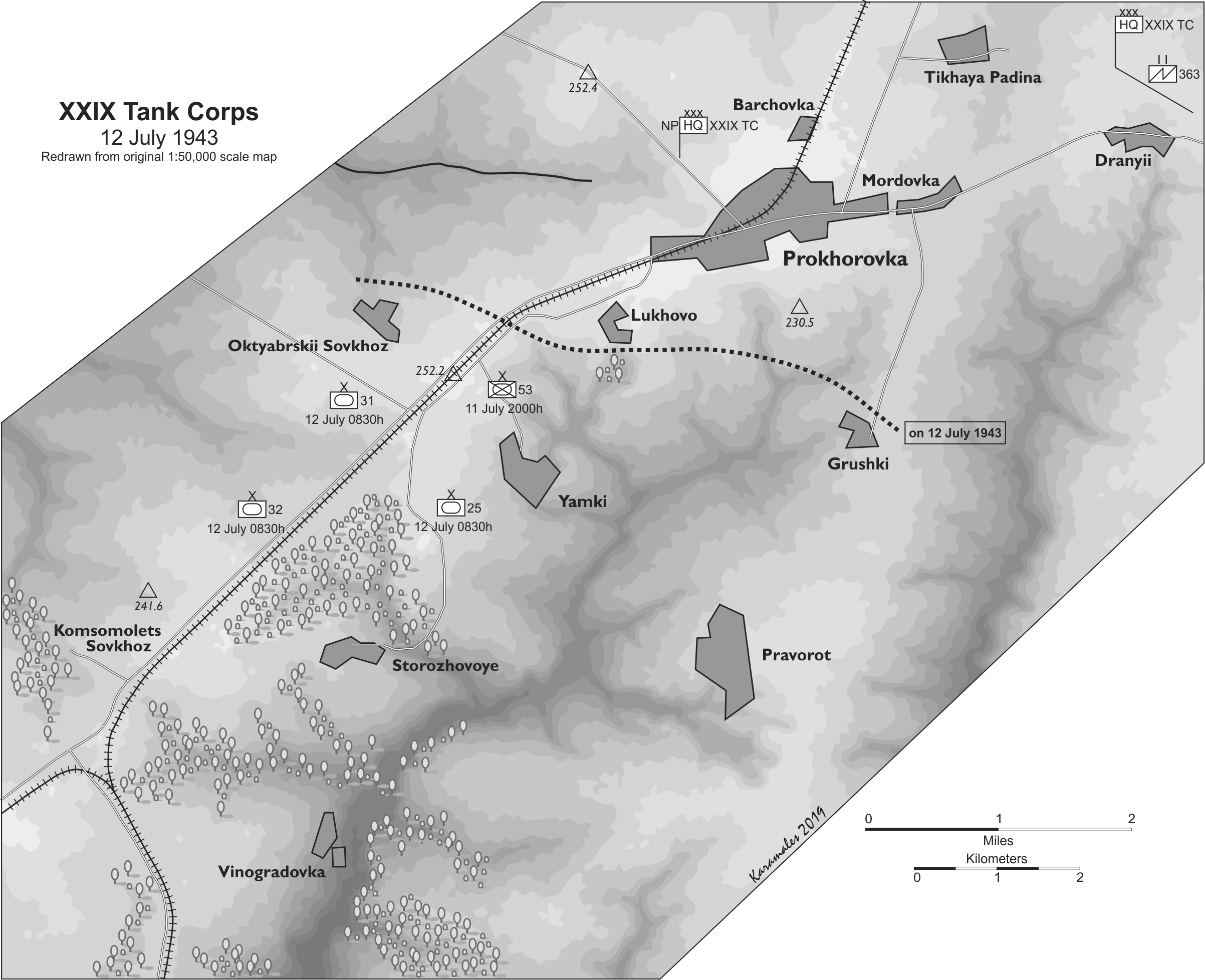
One other statement in the Lehmann account is that “These three [surviving tanks of the 6th panzer company] could fire at the Russians from a distance of ten to thirty meters and make every shell a direct hit because the Russians could not see through the dust and smoke that there were German tanks rolling along with them in the same direction. There were already nineteen Russian tanks standing burning on the battlefield when the Abteilung opened fire for the first time (footnote: “report from von Ribbentrop”).”
So, that account states that 19 Russian tanks were destroyed before the 5th and 7th company opened fire on them. Ribbentrop himself was credited with 14 tanks this day. Now, this could well be an exaggerated tally (and there are many examples of this), but let us take it seriously for a moment.
The attacking force was most of the 32nd Tank Brigade and the 25th Tank Brigade. The 25th Tank Brigade on 1600 11 July reported having 31 T-34s and 36 T-70s ready for action (they report 4 tanks in repair). The 32nd Tank Brigade on 1600 11 July reported having 60 T-34s and 4 T-70s. It is reported that at least 15 T-34s penetrated to the Komsomolets Sovkhoz in the original attack, where they were all destroyed. The 31st Tank Brigade (29 T-34s and 38 T-70s) was in the second echelon of the attack. So the total number of tanks in this initial attack force would have been 131 minus 15 detached = 116.
The 25th Tank Brigade on 2400 12 July reported that 13 T-34s and 10 T-70s were irretrievably lost, 11 T-34s and 10 T-70s were knocked out or hit mines and 7 T-34s and 4 T-70s were out of action due to technical breakdowns. So out of 67 tanks, 44 combat losses, 11 breakdowns and 12 or so remaining ready-for-action. The brigade was operating on the “other side” of the railroad track, and also probably also encountered the German self-propelled AT guns (Marders).
The 32nd Tank Brigade on 2400 12 July reported that 54 T-34s were either burned, knocked out, or are in need of repair. So at best 6 T-34s and 4 T-70s ready for action. Of those 54 combat losses, we gather at least 15 were lost at Komsomolets Sovkhoz, which is out of the area under discussion here.
If 11 of the 55 losses (20%) of the 25th Tank Brigade were mechanical, then it appears that there were also mechanical breakdowns among the remaining 54 – 15 lost T-34s. A straight line estimate would say 8. So total combat losses in these two tank brigades in an around the tank fields appear to be around 44 + 54 -15 – 8 = 75. Now, if Ribbentrop and company got 19 of them then we are looking at 56 other tanks put out action in combat by either 5th and 7th panzer company, artillery, antitank guns, aircraft, mines (they do specifically mention mines in the Soviet reports), German infantry on height 252.2 (which was also attacked by tanks), German Marders, Soviet aircraft (the 32nd Tank Brigade reports that it was attacked at 1300 by Soviet assault aircraft), or by operations later in the day, etc. So how many of these 56 other lost tanks actually drove into the tank ditch? I am guessing not a lot.
Added to that, the battle continued throughout the day, and clearly while many of these tanks were lost in the morning attack, some were lost later in the day.
Now, there are some accounts that seem to want to want to have lots of tanks rolling into tank ditches. But between the 6th Panzer Company, the rest of the II Panzer Battalion, the German artillery, German antitank guns, German air, Soviet air, mines, Marders and German infantry… then, who was left to roll into the tank ditch? Certainly not a lot.
Again, the tank ditch story is sometimes overstated. There is probably a reason why Captain Rudolf von Ribbentrop never mentions any Soviet tanks driving into the tank ditch in his account of the action.
Other related posts:
Basis of the Tank Ditch Story of 12 July 1943 | Mystics & Statistics (dupuyinstitute.org)
The Importance of the Tank Ditch | Mystics & Statistics (dupuyinstitute.org)

Truth to be told there will probably never be certainty. Furthermore, I believe it to be impractical to rely on postwar accounts regarding these matters. How does e.g. von Ribbentrop know that on day x y tanks were available without consulting primary sources (which do not exist in this specific case)? He could have relied on personal notes, sure, but it seems unlikely that he would have been able to – at least in that detail – b/c Prokhorovka was nothing more than just another big tank battle on the Eastern Front for the Germans, as has been established by Toeppel checking primary sources. So why would von Ribbentrop record precisley this action in such detail if he didn’t do it with a ton of other battles?